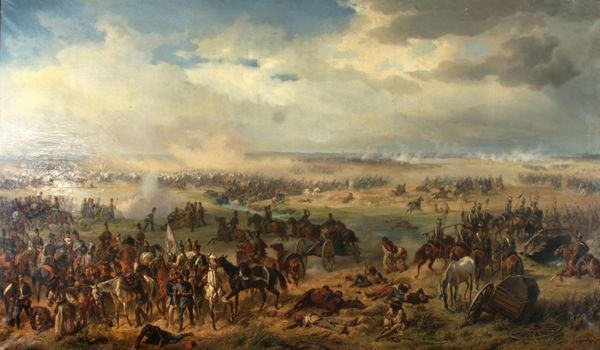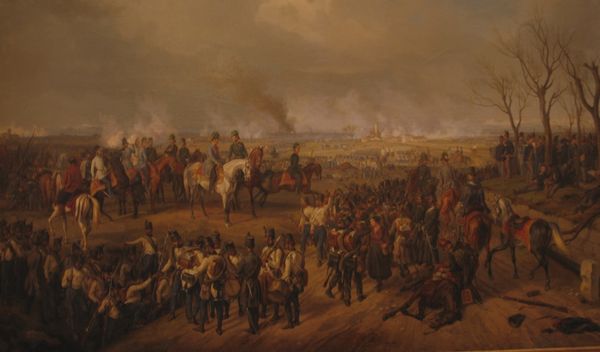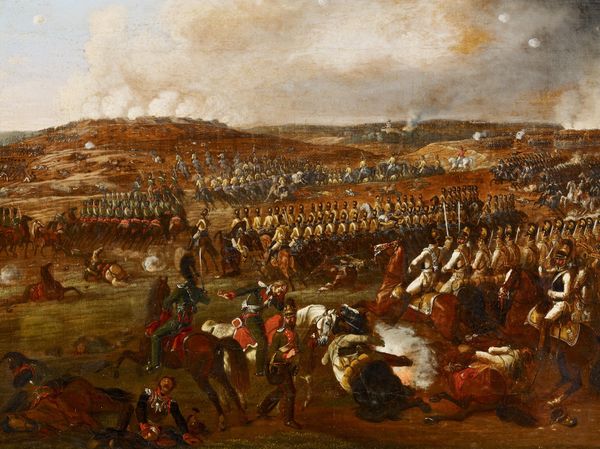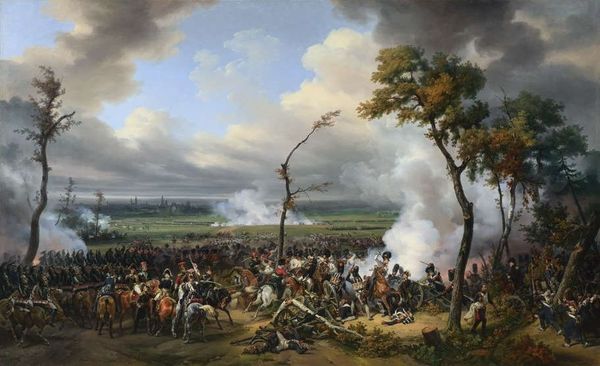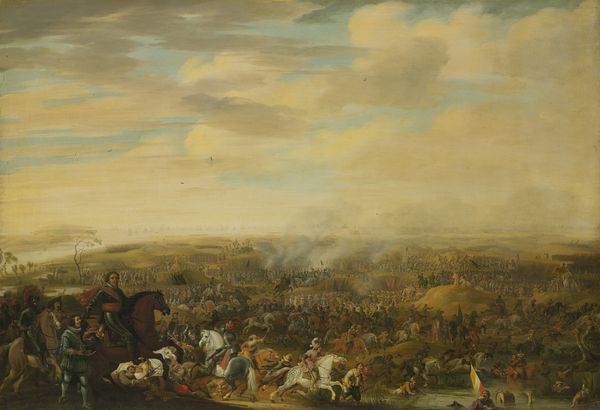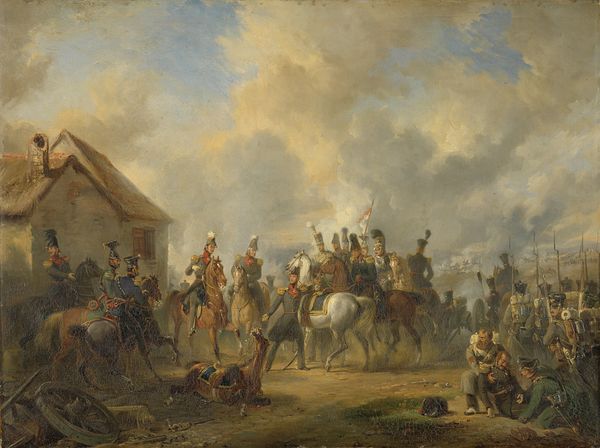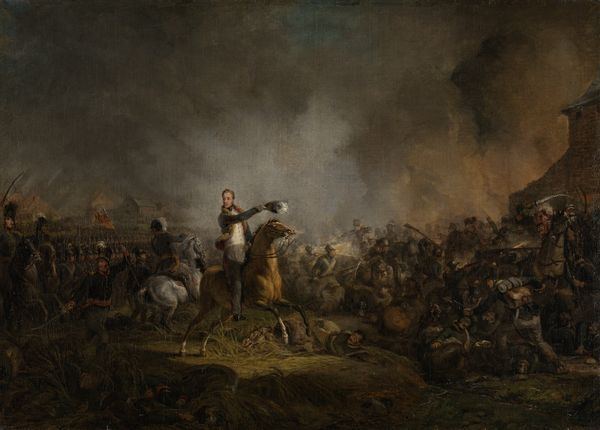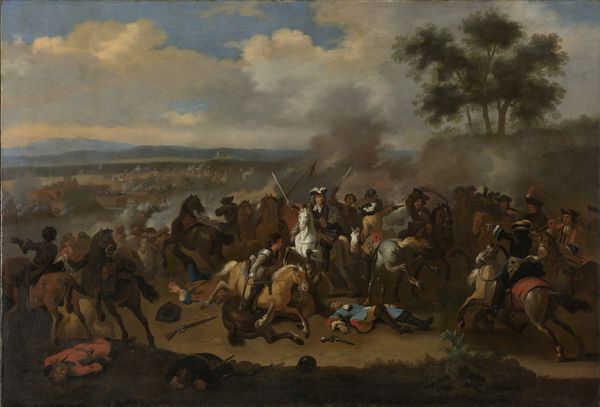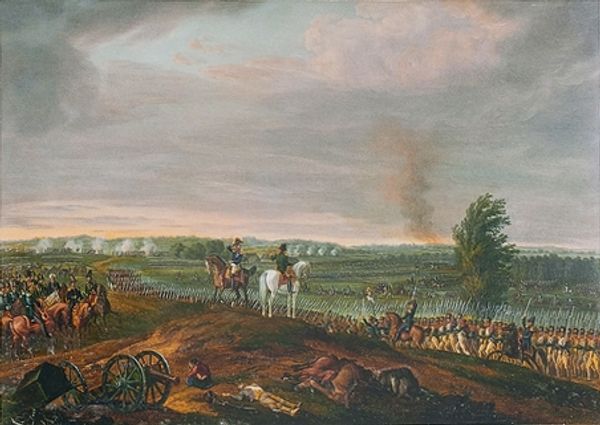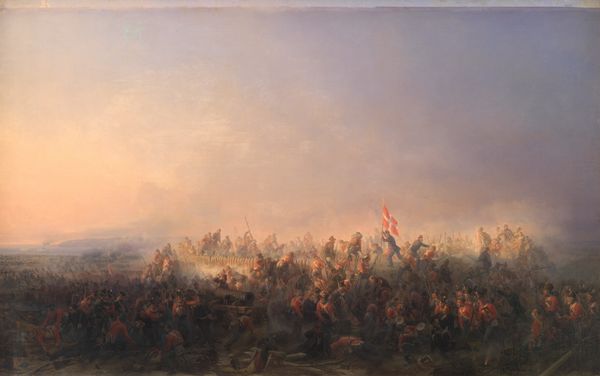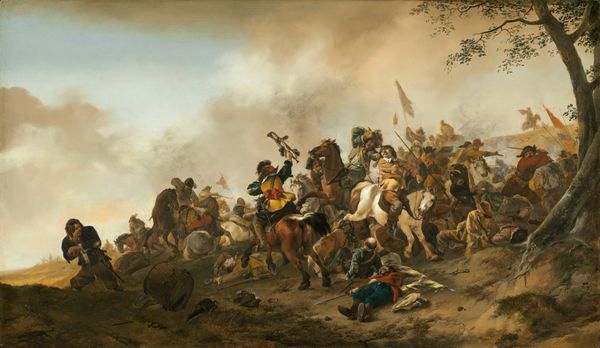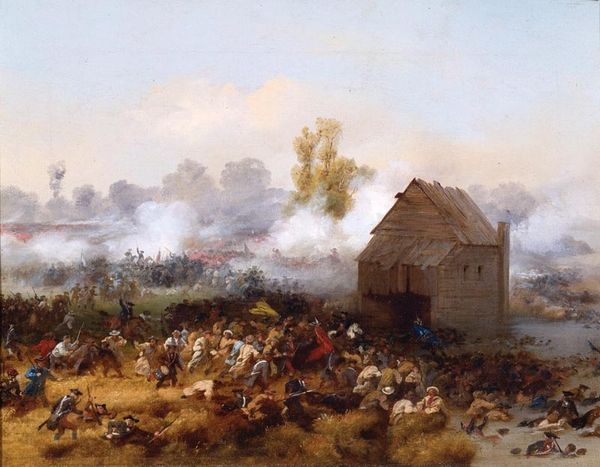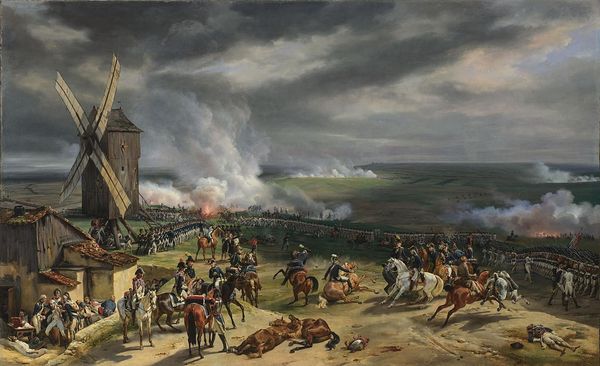
Copyright: Public domain
Curator: Here we have "The Battle of Szeged," a sweeping oil on canvas created in 1853 by Albrecht Adam, known for his depictions of military history. Editor: My initial reaction? Epic mess. It’s like someone dropped a bucket of soldiers and gunpowder onto a landscape. It makes you wonder, you know, what were they even fighting for out there? Curator: Well, historically, this scene depicts a conflict in Hungary during the 1848-49 revolution. Adam captured the grand scale of military engagements but also conveyed elements of the socio-political upheaval of that era. It represents not just battle, but the broader push for independence from the Habsburg Empire. Editor: Independence… sounds romantic! Yet, those grimy uniforms tell a different story, don't they? Makes you consider the reality for those young chaps in the middle of all that, far away from grand political ideas, trying to survive another second of what I can only describe as 'utter madness'. It feels honest somehow in that clash. Curator: Indeed, Adam’s attention to detail, even within such a large panorama, reflects his commitment to accuracy and perhaps even a sense of realism despite the Romantic-era tendencies toward idealization. That combination contributed significantly to how conflicts were remembered and understood in public discourse. Editor: I love the light. Check out the sky—it's so big and imposing and... kind of oppressive? Like history bearing down. Despite all the soldiers running about in organized chaos it makes me strangely still, as though all these guys and horses are painted inside me. What a thought. I might use that in one of my poems actually. Curator: Precisely, that blend of vast scale and individualized detail makes this a potent visual record of historical events but it also leaves plenty of room for interpretations on both the human and systemic level, concerning who is remembered and how. Editor: So, we get all of those details. It is powerful stuff if you step back and consider the entire theatre of war and the history that the piece carries within it. Curator: Yes, looking closely reveals how this image functioned—and continues to function—in the creation of national identity. Editor: Okay, Albrecht, point taken. Now you have given me much to think and write about after walking around in this chaos... Thanks.
Comments
No comments
Be the first to comment and join the conversation on the ultimate creative platform.
